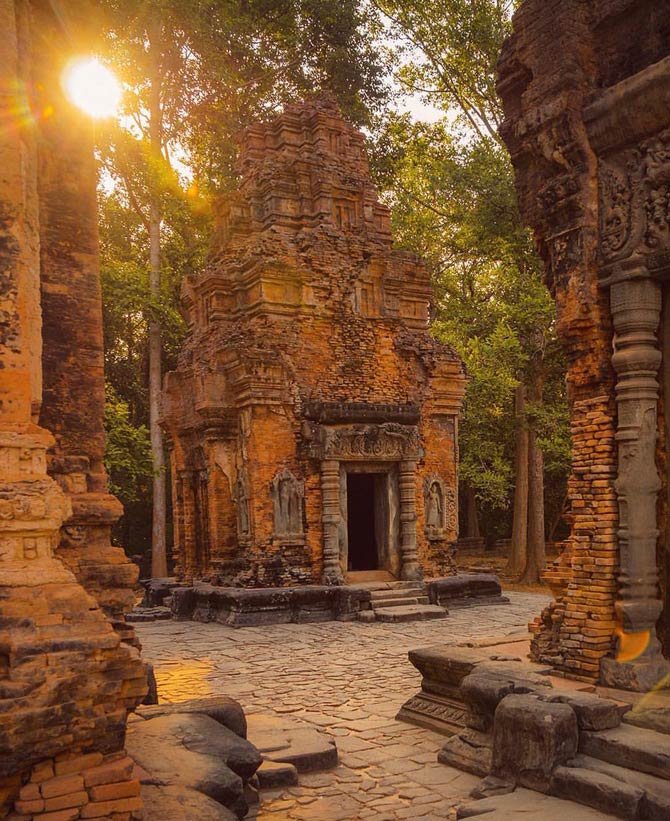Angkor Wat – the largest religious building in the world
Angkor is an entire temple complex and also a symbol of the splendor of the Khmer civilization. With its ornate stone facades and towers hidden in the depths of the forest, it has become one of the biggest tourist attractions not only for Cambodia, but also for the entire Southeast Asian region. The mass influx of visitors takes away some of the magic from this unique place, but we can still feel here like in another world, not only very old, but also almost magical.
Over the years the buildings have been overgrown with jungle, which instead of destroying them, has woven its roots into the ancient walls, giving them an unearthly character. The temple complex of Angkor Wat is a perfect example of the classical Khmer architectural style that has become a symbol of the whole country – it can even be found on the national flag.
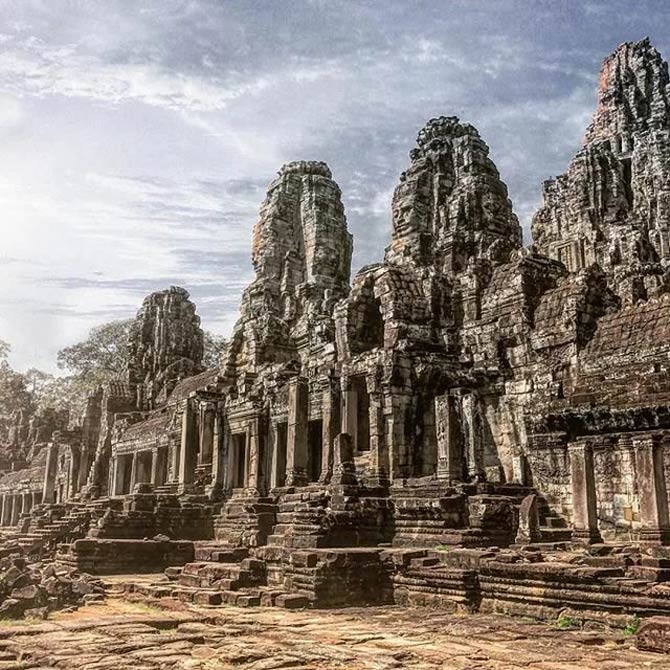
Mausoleum and temple
The Angkor Wat temple complex is located in northwestern Cambodia and has a spectacular area of over 162 hectares (402 acres). No other temple or sacred complex can compare to it in this regard. Originally, Angkor Wat was intended to be a mausoleum for a Khmer king named Suryavarman II who was dedicated to the god Vishnu as a Hindu temple. The vicissitudes of fate later turned the temple from Hindu to Buddhist. This happened in the late 12th century. Angkor was to be the central temple of the capital of the Khmer state, which was then still called Yaśodharapura.
Angkor Wat has two basic meanings in modern times. In the Khmer language it means “temple city” or “city of temples”, which definitely indicates its character and origin. The word Angkor itself refers directly to the name of the city or even the capital. On the other hand, the original name of the temple complex came from Sanskrit and referred to the name of the founder (the king, of course), but a name assumed only posthumously.
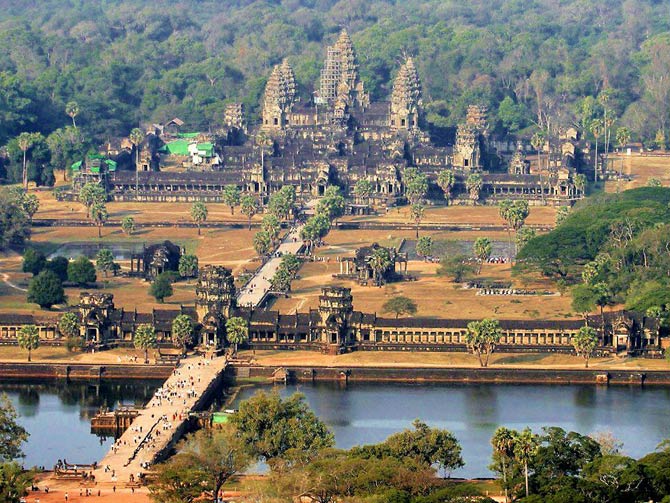
Construction of the temple
Angkor Wat is less than 6 kilometers from Siem Reap, the city that is the base for most tourists. According to legends, the temple was erected overnight by the god Indra, who is one of the most important gods of Hindu mythology. How was it really?
Angkor was probably built for about 35 years, maybe a little shorter. It took place at the beginning of the 12th century. King Suryavarman had quite a high opinion of himself, because he was a god-king (as was the case in those days) and therefore identified himself with the deity of Vishnu. The temple, erected at his command, was therefore dedicated to the Hindu gods. After the king’s death, the temple was transformed into a mausoleum.
The walls of the temple are made of allite sedimentary rock, which we call laterite. It is quite hard and durable, thanks to which the complex has survived to our times and is in really good condition. Of course, it was not without maintenance and renovation, but it is still a much more “historic monument” than, for example, the palace in Knossos in Crete, where only narrow walls and some bas-reliefs have been preserved from the original rooms, while the rest was simply added.
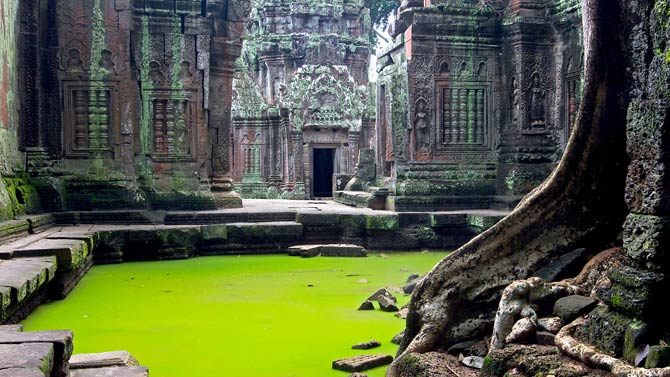
Angkor Wat is a combination of the standards of temple design in those times and territories and something unique: concentric galleries were built around the temple mount on several levels.
The whole thing, seen from the bird’s eye view, has a very regular shape and a moat. It is the most important temple in all of Angkor, next to Bayon and Ta Prohm. In the 15th century, after an attack by the Thai army that sacked the entire complex, Angkor Wat was abandoned by the population and gradually overgrown with jungle.
It was only discovered at the end of the 19th century by the French researcher Henri Mouhot. In this way, Angkor Wat became a phenomenon on a global scale. It underwent maintenance work and proved to be resistant not only to the passage of time, but also to looting, and the period of Khmer Rouge rule. In 1992, it was placed on the UNESCO World Heritage List.
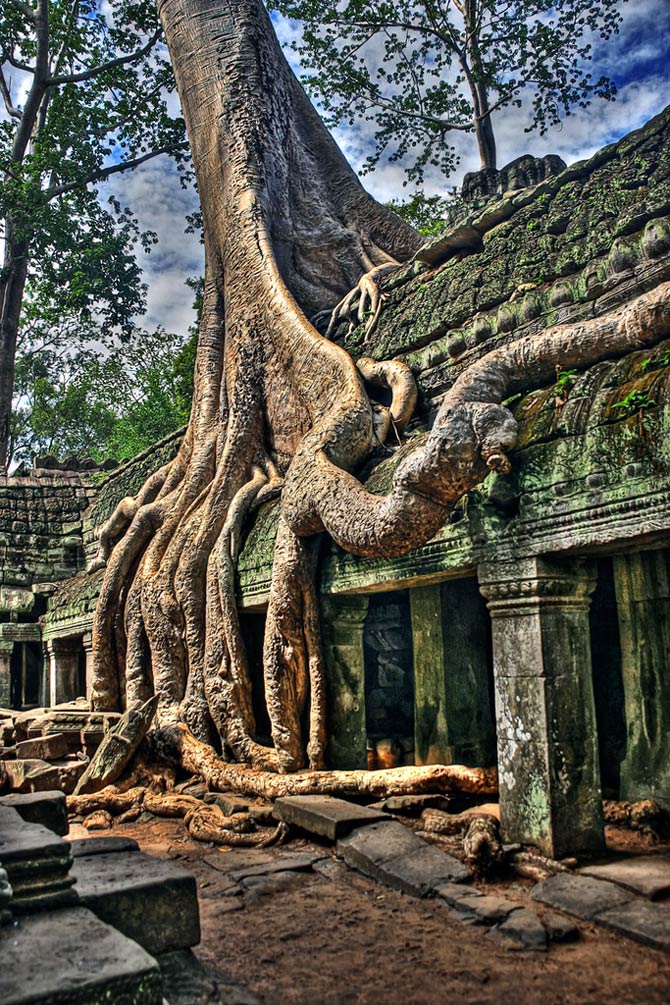
Architecture
Angkor Wat has the shape of a perfectly symmetrical block, from which there are lotus-shaped towers and a height exceeding 60 meters (197 ft) in some cases. It is a symbol of the center of the universe, the closeness of the god Vishnu and the heavens. Along with successive terraces and galleries, we break away from the earthly sphere and move towards the spiritual sphere. The whole complex is surrounded by a moat, 190 meters (623 ft) wide.
Tourists come to Angkor Wat en masse to see the ornaments and bas-reliefs of the complex. Some of them are so extensive that they are called stone tapestries. They are immortalized mythological scenes from Hindu epics (Ramayana and Mahabharata), events in the life of the king, his ancestors or important historical figures of those times. According to historians, there are over 20,000 characters and none is the same! The temple was supposedly built by 5,000 craftsmen and nearly 50,000 workers.
The complex also includes labyrinths, stone stairs and beautiful stone facades. The largest crowds come here at sunrise or sunset to see the ancient walls bathed in a golden or reddish glow and illuminated by the sun’s rays reflecting off the water.
At the beginning of its existence, Angkor Wat had to be even more charming, because the carvings were painted with many colors and the golden towers sparkled like treasures. There was also a statue of Vishnu in the center of the temple – all gold and placed on the back of a sacred bird with a human body (this is the divine Garuda).

Sightseeing Angkor Wat
The complex is huge, there are plenty of tourists and many options, so it is worth getting ready for sightseeing in advance and developing an optimal plan. Let’s face it, Angkor Wat is not a place that we can see in a few hours, unless we only want to take a few spectacular photos.
If we want to see the whole of Angkor, and not only Angkor Wat, and therefore see over 100 temples, you need to spend several days visiting it from morning to evening. If we opt for the half-and-half option and we want to see only the most important monuments, 2 days will suffice. We will buy tickets (for 1, 3 or 7 days) directly at the entrance to the complex, at the ticket offices. It is worth buying them the day before if you do not want to waste a large chunk of the day standing in the queue.
It depends on us whether we will walk everywhere, take a tuk-tuk (local bus) or choose a bicycle. However, let us take into account that the areas are really large and the heat can reach 40 degrees Celsius (104 °F). We can also make a choice about the route, because there are two options: a small and a large loop. The small tour includes visits to the temples of Angkor Wat, Bayon, Ta Keo, Ta Phrom and Banteay Kdei. The larger loop means more temples, including Neak Pean and Sras Srang. When renting a tuk-tuk, remember that the driver only offers transport, so he is not a guide. We will then visit the temple on our own.
The routes can be modified, you can choose options with an afternoon rest or even return to the hotel to relax. The prices are not killer, for a full day of sightseeing including the tuk-tuk ride, you will pay about $20 (plus an admission ticket, which usually costs twice this price or even more).
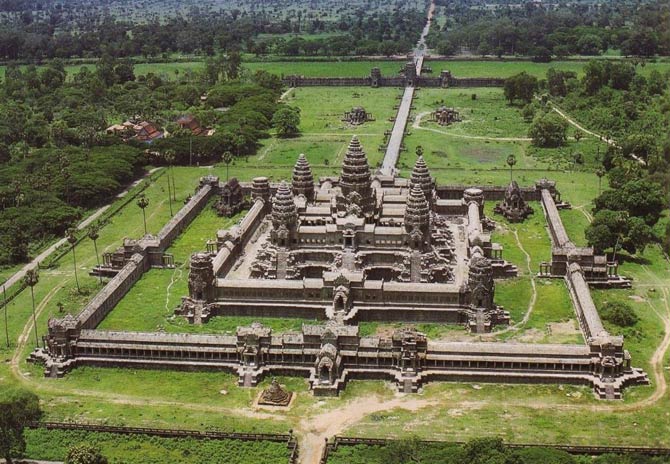
Detailed data
Angkor Wat in numbers
- The area of the Angkor complex: 162.6 ha (1 626 000 m² / 402 acres)
- The temple was built at the beginning of the 12th century
- Construction took about 35 years
- Angkor Wat was discovered to the world in the 19th century
- In 1992, the temple entered the UNESCO list
- The entire Angkor complex has over 100 temples
- The tallest tower, Angkor Wat, is 65 meters (213 ft) high
- The temple is surrounded by a moat, 190 meters (620 ft) wide and 5 km (3 mi) in circumference.
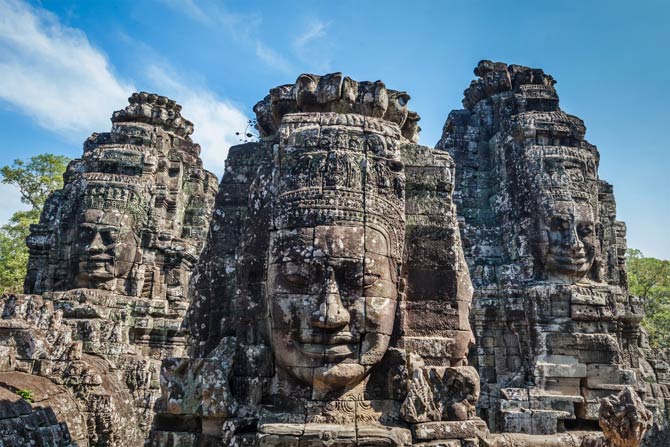
Angkor Wat – interesting facts
- Unlike most temples, the one in Angkor Wat faces west, not east. Researchers believe this is due to the more “funeral” nature of the temple. The setting sun illuminating the building is supposed to give the impression of the end of the earthly life cycle.
- Angkor Wat was built without any construction machinery, only by human hands (elephants were also used as transport). Instead of the masonry mortar, a special plant mixture was used, which is almost completely invisible.
- In Lara Croft: Tomb Raider (2001), many of the spectacular scenes were filmed in Angkor Wat.
